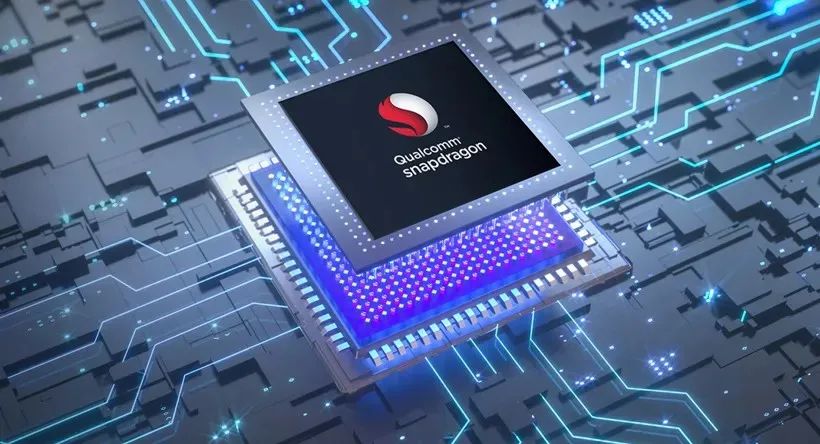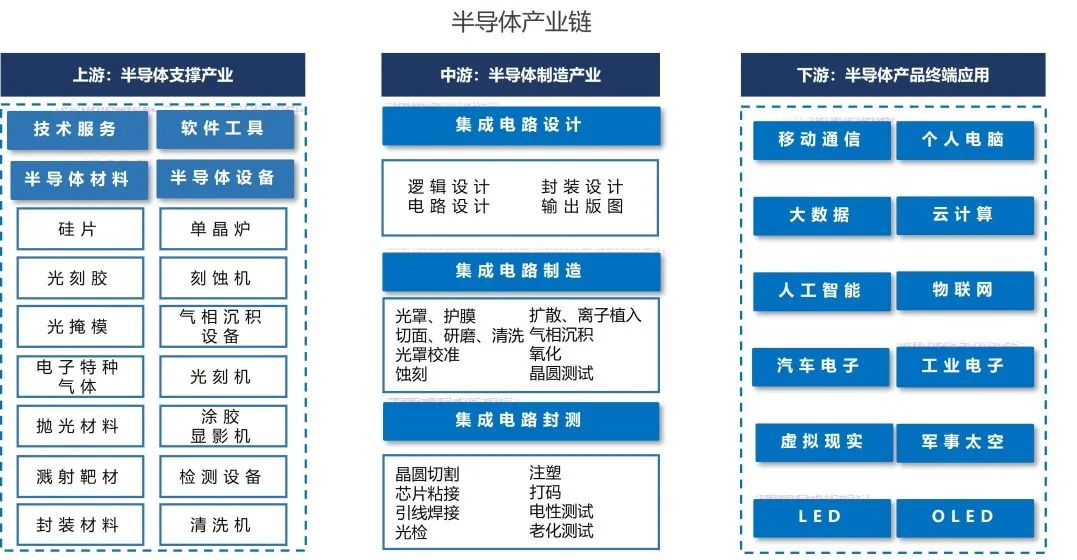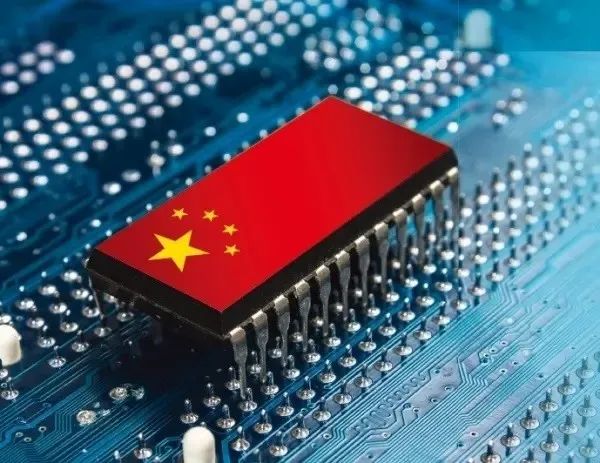
The semiconductor industry is one of the pillar industries of the national economy, an important component of the information technology industry, and a strategic, foundational, and leading industry that supports economic and social development and ensures national security. The level of its development is one of the core indicators for measuring a country’s technological development level, and it is an industry that the state highly values and encourages.
The state attaches great importance to the development of the semiconductor industry. On February 9, 2011, the State Council issued Document No. 18 (Guo Fa [2011] No. 4), titled “Several Policies to Further Encourage Software Industry and Integrated Circuit Industry Development,” proposing 31 specific policy measures from aspects such as finance, taxation, investment and financing, research and development, and import and export, to further increase support for the development of the software and integrated circuit industries.
What is a semiconductor? Why does the state attach so much importance to its development? Today, let’s learn about it together.

01
Semiconductor Related Concepts

1
Semiconductor
A semiconductor is a material that has electrical conductivity between that of a conductor and an insulator at room temperature. Conductors are conductive materials, such as copper and iron; insulators are non-conductive materials, such as plastic, which is completely non-conductive; semiconductors can conduct electricity and also block current, such as Si (silicon) and GaAs (gallium arsenide), which can conduct or not conduct electricity depending on the situation. Most electronic products today, such as computers, mobile phones, or digital recorders, have core components that are closely related to semiconductors.
2
Chip
A chip is a collective term for semiconductor component products. Chips are made from semiconductor materials, which can switch between conductive and non-conductive states. This characteristic corresponds to the computer’s ability to recognize only the numbers 0 and 1, thus giving semiconductor-based chips a natural advantage in manufacturing.

3
Integrated Circuit
An integrated circuit is a type of microelectronic device that is manufactured using specific processes to interconnect the transistors, resistors, capacitors, and inductors required in a circuit on a semiconductor substrate, which is then encapsulated in a shell to form a microstructure with the desired circuit function. The foundation of an integrated circuit is the transistor, and the foundation of the transistor is the semiconductor; thus, semiconductors are also the foundation of integrated circuits.


02
History of Semiconductor Development

Before 1970
The invention of the transistor can be traced back to 1929, when engineer Lilienfeld obtained a patent for a type of transistor. However, due to the technology level at that time, the materials used to manufacture transistors did not reach sufficient purity, making it impossible to produce them. It wasn’t until 1947 that Bell Labs invented the first transistor. In the 1960s, Fairchild Semiconductor developed the world’s first commercial integrated circuit (IC), which was subsequently mass-produced. Gordon Moore, one of the founders of Intel, proposed the famous “Moore’s Law,” which pointed the direction for the development of the semiconductor industry in the following decades, leading to a period of rapid growth in the semiconductor sector.
1970-1985
With the prosperity of the home appliance era, the semiconductor industry model gradually shifted to the IDM model, with mainstream wafer sizes of 3-4 inches and process nodes of 1.2 microns to 0.5 microns. It was also during this period that the first industrial transfer occurred, gradually shifting from the United States to Japan, giving rise to semiconductor giants such as Toshiba, Hitachi, and Fujitsu, which propelled the development of the semiconductor industry in Japan.
1985-2010
Driven by demand in the PC and mobile internet sectors, the vertical division of labor model became the main trend in the industry. The combination of IC design companies (Fabless) and foundries (Foundry) began to emerge as a new model for the development of the integrated circuit industry, with mainstream wafer sizes growing to 6-8 inches and process nodes advancing to 40nm. This period also saw the second industrial transfer, with South Korea and Taiwan becoming the main forces in the semiconductor industry, giving rise to companies like Samsung and TSMC.
2010-Present
In the era of 5G, AI, big data, and the Internet of Things, driven by consumer demand and technological advancements, the division of labor in the industry has become more refined. The Chinese semiconductor industry has begun to rise, with more application trends pushing the further development of the semiconductor industry, mainstream wafer sizes of 8-12 inches, and process nodes evolving to an astonishing 5nm and even 3nm, constantly evolving.
Today, China has become the core area of the third industrial transfer in the semiconductor industry. The vast semiconductor consumer market, cheap labor, and abundant resources have attracted a large amount of capital to invest in the semiconductor industry in China, with almost all major semiconductor companies having investments in China. Companies like Huawei and SMIC have risen to prominence.

03
Introduction to the Semiconductor Industry Chain

The upstream of the semiconductor industry chain includes the semiconductor supporting industry, which comprises semiconductor material suppliers, semiconductor manufacturing equipment suppliers, and semiconductor testing equipment suppliers; the midstream is the semiconductor manufacturing industry, mainly including three major aspects: integrated circuit design, manufacturing, and packaging/testing; the downstream mainly involves application fields, with a broad range of semiconductor applications in most electronic devices, including communication equipment, electronic products, industry, and medical fields.

04
Introduction to Some Typical Semiconductor Enterprises Worldwide

United States
Intel
Intel, founded in 1968, is the world’s largest designer and producer of semiconductors. Commonly found in home computers are the Pentium and Core processors, as well as the Xeon processors found in servers, all of which are products of Intel. In recent years, Intel has been busy positioning itself ahead of the next technological wave. According to earlier reports, Intel will focus on eight major fields in China in the future: artificial intelligence, autonomous driving, 5G, virtual reality, sports, robotics, precision medicine, and China Manufacturing 2025.
Qualcomm
Founded in 1985, Qualcomm is mainly engaged in the research and development of wireless communication technology and smart wireless terminal chips, such as Snapdragon processors and network base stations. After the popularity of smartphones, it almost monopolized the chips used in flagship Android phones. However, as the smartphone market became homogenized and growth slowed, Qualcomm actively expanded into various emerging fields, extending its core technology into the Internet of Things, mobile computing, and vehicle networking, with data centers and some vertical fields of the Internet of Everything also being key investment directions. In the rapidly growing field of artificial intelligence, Qualcomm acquired a Dutch machine learning startup, Scyfer, and stated that it had already begun fundamental research.
Europe
ASML
ASML, a Dutch company founded in 1984, provides lithography machines and related services for semiconductor manufacturers. Currently, most semiconductor manufacturers globally procure lithography machines from ASML, such as Intel, Samsung, Hynix, TSMC, and SMIC, making it one of the largest semiconductor equipment manufacturers in the world. The lithography machines that are currently being “choked” in China are produced by this company.
Japan
Toshiba
Toshiba was formed in 1939 by the merger of Shibaura Manufacturing Company and Tokyo Electric Company. It is the world’s second-largest manufacturer of flash memory chips and the founder of NAND flash memory. Its products mainly cover two fields: digital products and electronic components. In the digital product field, Toshiba’s products are applied in mobile platforms, wireless communication technologies, electromagnetic and optical storage, and video information; in the electronic optical device field, products are applied in personal consumer external hard drives, internal mechanical hard drives, and optoelectronic semiconductors.
Taiwan
TSMC
Founded in 1987, TSMC is the world’s first dedicated integrated circuit manufacturing service (foundry) company. Due to its advanced process technology, top-notch service, and integrity, TSMC has secured large orders from clients such as Apple, Qualcomm, and Huawei HiSilicon, earning the trust and support of these major clients. In the semiconductor industry, TSMC is also praised for its excellent process technology and outstanding performance. Currently, TSMC is the world’s largest foundry, with annual revenues exceeding $30 billion, and is one of the main forces driving advancements in semiconductor process technology.
South Korea
Samsung
Founded in 1938, Samsung is the largest multinational conglomerate in South Korea, encompassing numerous international subsidiaries, including Samsung Electronics, Samsung C&T, and Samsung Life Insurance, with businesses spanning electronics, finance, machinery, chemicals, and more. Samsung began developing dynamic random-access memory (DRAM) in 1983 and has since become the absolute leader in the markets for DRAM and NAND flash memory, even developing 3D NAND chips with ITb capacity. In the chip foundry sector, Samsung is one of the main driving forces behind advancements in process technology, with its Exynos chips being known for their advanced performance and processes, primarily used in Samsung’s own smartphones.
05
Introduction to Some Typical Semiconductor Enterprises in China
Huawei HiSilicon
HiSilicon Semiconductor Co., Ltd. was established in October 2004, originating from Huawei’s Integrated Circuit Design Center founded in 1991. Headquartered in Shenzhen, it has design branches in Beijing, Shanghai, Silicon Valley in the United States, and Sweden. HiSilicon mainly engages in the design, development, and sales of semiconductors for electronic and communication products. Its chips and solutions cover wireless networks, fixed networks, and digital media, successfully applied in over 100 countries and regions globally; in the digital media field, it has launched solutions for network monitoring chips, videophone chips, DVB chips, and IPTV chips.
SMIC
SMIC was established in April 2000 and is one of the world’s leading integrated circuit foundry companies and the leader of the integrated circuit manufacturing industry in mainland China. It possesses advanced manufacturing capabilities, capacity advantages, and service support. SMIC is the first pure-play foundry in mainland China to offer 28nm advanced process technology. Its 28nm technology is the mainstream technology in the industry. Headquartered in Shanghai, SMIC has a global manufacturing and service base. Its first-generation 14nm FinFET technology achieved breakthrough progress and entered mass production in the fourth quarter of 2019, representing the most advanced level of independent integrated circuit development in mainland China. In addition to its high-end manufacturing capabilities, SMIC also provides comprehensive foundry solutions to meet various customer needs with one-stop services, covering everything from photomask manufacturing, IP development, and backend auxiliary design services to outsourcing services, including bump services, wafer probing, and final packaging and testing.
06
Opportunities and Challenges Facing the Domestic Semiconductor Industry
Under the dual impact of the pandemic and geopolitical tensions, the global semiconductor industry is bound to enter a period of structural adjustment, which presents an important opportunity for China to optimize its industrial structure and enhance its value chain.
First, the U.S. crackdown on China has shattered the myth of a free market, dispelling the illusion that “it’s better to buy than to make, and better to rent than to buy,” further solidifying China’s determination and pace to master cutting-edge technology independently.
Second, the U.S. “chip ban” has objectively provided Chinese companies with extremely valuable domestic market resources. For example, in the case of chemical mechanical polishing equipment, in 2017, U.S. Applied Materials and Japan occupied 98.1% of the domestic market, but now the 8-inch polishing equipment manufactured by China Electronics Technology Group has reclaimed 70% of the domestic market.
Third, increased government investment ensures the rapid development of China’s semiconductor industry. The National Integrated Circuit Industry Investment Fund was established in 2014, raising over 138.7 billion yuan in its first phase, with 67% allocated to integrated circuit manufacturing. According to data from the China Semiconductor Industry Association, the scale of China’s integrated circuit manufacturing industry has been growing year by year, reaching 256 billion yuan in 2020, a year-on-year increase of 19.11%, with a production volume of 26.147 billion pieces, also a year-on-year increase of 19.55%.

The challenges facing the development of the domestic semiconductor industry mainly include the following two aspects:
Firstly, technical challenges. Currently, China’s semiconductor products are mainly concentrated in the mid-to-low-end fields of semiconductor materials, wafer manufacturing, and packaging/testing, with semiconductor capacity mainly concentrated in mature processes of 28nm and above. The disparity in technology levels has led to a heavy reliance on imports of mid-to-high-end semiconductor products, with almost all CPU, GPU, and memory fields dependent on imports. According to statistics from the General Administration of Customs, China’s localization rate for semiconductor equipment is less than 20%, with imports amounting to as much as $432.5 billion in 2021 alone. The domestic technology level has become the biggest bottleneck restricting the development of China’s semiconductor industry.
Secondly, international political challenges. Since the U.S. identified China as its main competitor, it first waged a trade war with China, followed by “precise decoupling” and a technological cold war, leading to the potential for ideological divisions and artificial ruptures in the global semiconductor supply chain. The U.S. government is trying to relocate U.S. semiconductor companies to the U.S. mainland, Taiwan, Japan, and South Korea, regions within its control. Even during the chip shortage caused by the COVID-19 pandemic, the Biden administration still rejected Intel’s plan to expand production in China to prevent the mainland from gaining advanced processing capabilities. Moreover, the U.S. has intensified sanctions against Chinese companies like Huawei, suppressing the development of China’s high-tech enterprises to prevent China from posing a threat to the U.S.-dominated internet architecture.

Source: “Knowledge You Should Know About the Semiconductor Industry in Jiaozhou City”